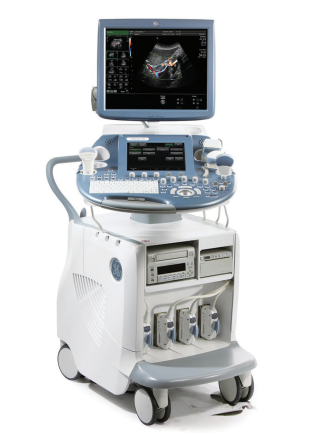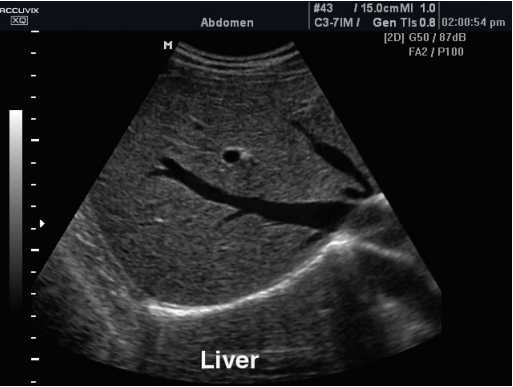general ultrasound
Download and print as a PDF
DownloadWhat is ultrasound?
Ultrasound is safe and (usually) painless use of high frequency sound waves to produce diagnostic images of the internal organs and structures of your body.
The practitioner undertaking the examination is able to interpret these images and will write a full report which will be sent to the doctor who referred you.
Ultrasound is safe to use, however should only be undertaken when clinically needed. There is no evidence that ultrasound used in medical imaging has any side effects.
Why do I need an ultrasound?
Ultrasound is used for a number of reasons. These include:
- Assessing the upper abdomen, including the pancreas, liver, biliary tree, gall bladder, kidneys, bladder and spleen.
- Checking the pelvis, this includes the uterus, ovaries and endometrium.
- Vascular system - e.g. to check for clots in the leg
- To look at muscles and joints (musculo-skeletal ultrasound)
- To aid doctors in taking tissue samples (known as a biopsy).
Ultrasound is not able to fully evaluate the stomach or bowel, as sound waves are unable to travel through gas and air.

What will the ultrasound involve?
Trans-abdominal scan
- A water based gel will be applied to your skin, over the area of interest. The gel is used to enable good contact between the probe and your skin.
- The ultrasound scan should be painless, however sometimes pressure does need to be applied to obtain better quality images which can cause some discomfort.
- Don’t be surprised if the images seem blurred or shadowy. This is normal and our sonographers/radiologists (specially trained staff who are carrying out the procedure) are trained to interpret these.
- The ultrasound procedure takes between 15–30 minutes, depending on what is being examined. After the scan, the gel will be wiped off your skin.
Trans-vaginal scan
- Trans-vaginal pelvis ultrasound (TV) is an internal examination where an ultrasound probe is placed into the vagina. This allows the practitioner to fully assess the uterus, endometrium, ovaries and adnexae. You will lie on the ultrasound couch with hips raised up by a pad.
- The ultrasound probe is covered with a single-use protective sheath, and KY jelly is placed onto the top of the probe. The practitioner will need to ask consent before this scan can take place, and will also need to know if you have any latex allergies.
Preparing for your scan
Different ultrasound scans require different types of preparation. Details on how to prepare for your scan are explained in the appointment letter.
Please follow these instructions carefully, or the practitioner may not be able to complete the scan.
Abdominal scan - You must not eat and drink six hours before your appointment time. You are allowed small sips of water or other non-alcoholic drinks but they must not be fizzy or contain milk.
Urinary tract - Please attend the examination with a full bladder. To achieve a full bladder you need to drink plenty of fluids throughout the day. Over the last two hours before the examination you should drink approximately two pints/one litre. Please try not to empty your bladder in the hour leading up to your examination.
Pelvic scan trans-abdominal (TA) - Please attend the examination with a full bladder. To achieve a full bladder you need to drink plenty of fluids throughout the day. Over the last two hours before the examination you should drink approximately two pints/one litre. Please try not to empty your bladder in the hour leading up to your examination.
Pelvic scan trans-vaginal (TV) - There is no preparation for this scan. The practitioner will ask you to empty your bladder before going into the scan room.
There are no changing facilities within the department, so to make the examination easier, please wear loose clothing that can be moved out of the way of the area being scanned.

After your scan
In some cases the scan will be normal and we may not be able to give you a reason for your pain/discomfort. Please do not feel the scan has been unnecessary as this information is important to your doctor. Not all abnormalities can be diagnosed by ultrasound.
It is usually possible for the sonographer/radiologist to be able to tell you what they have found. However, this won’t be possible if they need to discuss the images with another clinician.
You will not experience any side-effects and will be able to drive home straight away, if you wish.
A copy of the results of your ultrasound will be sent to the doctor who asked you to have this examination. The sonographer/radiologist will advise you how you will receive the results as this depends on whether your GP or consultant requested the scan.
What other options are available to me?
There are many different imaging modalities, however it depends on what part of your body you are having scanned as to which imaging you require.
If you choose not to have ultrasound for any reason, the doctor who referred you will be informed.
If you would like to discuss your ultrasound scan or if you have vision, mobility or access issues please contact the Imaging Department on 01273 523040
Opening hours 08.00 – 18.00 Monday to Friday.
This information is intended for patients receiving care in Brighton & Hove or Haywards Heath.
The information here is for guidance purposes only and is in no way intended to replace professional clinical advice by a qualified practitioner.
Review Date: January 2023


